- NEW DVD Series – Stone Setting with Bezels
- Tube Set Charm by Kim St. Jean
- Prong Basket Pendant by Kim St. Jean
- NEW DVD Series – Stone Setting with Cold Connections
- New DVD Series – Stone Setting with Wire
- NEW DVD Series: Introduction to Stone Setting by Kim St. Jean
- Featured Tool: Bracelet Bending Plier
- NEW Dvd by Eva Sherman
- Fun, Fast Fold Forming DVD Series
- Double Band Ear Cuff from Alex Simkin
Gem Profile June 14: Cat’s Eye
by Layna Palmer, Wire-Sculpture.com

Cat’s Eye
I think we are all familiar with cats. Cats are creatures that you either love, or hate. I have one cat in particular that will sit and stare at you, and I mean STARE at you, which is really creepy at night when you’re sleeping. He is a solid gray cat with pumpkin orange eyes almost the same color as Tiger Eye, and when it’s bright in the room, his pupil is just a tiny slit of black on a sea of orange. It’s this effect that gave us the term “Cat’s eye” in the gemstone world. Chatoyancy is used to describe this phenomenon in gems and is the literal translation of “oeil de chat” which is cat’s eye in French. Chatoyancy (she-toy-en-see) not only describes the cat’s eye effect in a stone, but is also used to describe the shifting luster in stones like tiger eye, pietersite and dumortierite as well.
What is Cat’s Eye?
The cat’s eye effect happens differently depending on the gemstone. In a tiger eye, the chatoyancy is created by the crocodilite (asbestos) being replaced by silicon. Tiger eye can be the more familiar honey-brown, blue, green and even red. Other fibrous types of cat’s eye include beryl, dumotierite, pietersite, corundum and quartz. To really present the cat’s eye in the best possible way, chatoyant stones are usually always cut en-cabochon or smooth beads with the smaller stones exhibiting the sharpest cat’s eye effect.
About Cat’s Eye
Cymophane or oriental cat’s eye, a type of chrysoberyl, is the most precious of the stones and is a very hard stone at 8.5 on the Mohs scale. The cat’s eye is caused by thin tubes or voids within the crystal structure in cymophane. If the inclusions, called silk, are rutile or asbestos, they form a bit differently in the chrysoberyl and create a star or asterism effect. Ceylon sapphires, black star diopside and star of India rubies are the most familiar among this type of chatoyancy, and the most expensive! Natural cat’s eye stones are found in various areas of the world including Brazil, Australia, Sri Lanka (Ceylon), and Russia.
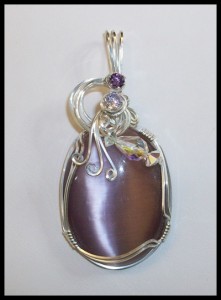
Wrapped Amethyst Cat’s eye in silver filled wire with two accent CZ stones. One lavender colored and one amethyst color. Piece created and photo provided courtesy of Joan Ellen Madouse.
Now, what about the fun colors of cat’s eye that we see…even on our website? The cat’s eye effect in these cabochons and beads is created by the same fibers that carry high-speed communications and create the really cool light that is used in Holiday decorations. Yes, we’re talking about fiber optics! To create the cat’s eye cabochons, fiber optic threads are tightly bundled and embedded into glass. This slab can then be cut into beads and cabochons of really any size or color.

Ring made with a blue glass Cat’s Eye and argentium silver. Ring created and photo provided courtesy of Adrien De Ruyck.
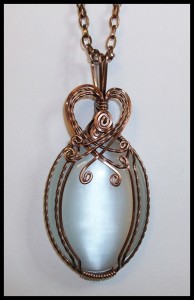
White Cat’s Eye in antique copper wire with matching chain. Piece created and photo provided courtesy of Joan Ellen Madouse.
So, from metamorphic transformations of tiger eye, to rutile inclusions and fiber optics, Cat’s eye is a beautiful and intriguing stone that can mesmerize and captivate the imagination of jewelers worldwide.
Next week, we’re taking a look at Rutilated Quartz. Have you made jewelry with any type of Quartz before? Send us pictures at tips@wire-sculpture.com and they could be featured!
Resources & Recommended Reading
Gem Profile by Layna Palmer
Click to Receive Daily Tips by Email






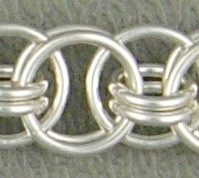

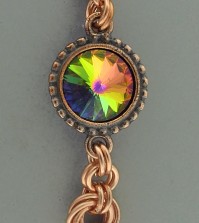
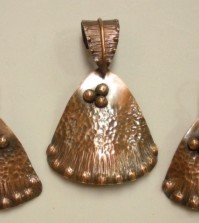














lynn
June 13, 2013 at 7:05 am
the name of cats eyes is fiver optic, but tigereye & labradoite
can look like cats eyes
Carole
June 13, 2013 at 11:19 am
The name of the gemstone is Tiger Eye but Fiber Optic material can also be made into cabochons with stunning “cats eyes”.
Kaira
November 20, 2014 at 4:06 am
Thank you for those details but why astrologers generally recommend a grey colored Cats Eye Gemstone ?